|
“The fruit of sacramental life is both personal and ecclesial. For every one of the faithful on the one hand, this fruit is life for God in Christ Jesus; for the Church, on the other, it is an increase in charity and in her mission of witness" (Catechism of the Catholic Church 1134).
I am a liturgical - and sacramental - junky. Whether it be when the organ plays, the incense burns, wooden crosses process or babies cry- I love being part of liturgies! But my love of liturgy does not end with the communal gathering or the symbolic signs. Rather, the reason I love liturgy is that I believe, as Fr. Aidan Kavanagh, OSB, a liturgical theologian, put it, “liturgy is doing the world the way the world was meant to be done.” In the liturgy we are participating in the life of God. We are entering into, and living within, the eternal circulation of the Trinity’s love! But what does that actually mean? It means that we are not simply attending a gathering. We do not show up to another building for another event. It is not a lecture or a show. Rather it is a transformation of ourselves with our God, who is love, so we can go out and witness to that love and act out of it. This is why I love liturgy. It calls me out of myself. It shows me God acting in all things and then sends me out to be his hands and feet. Liturgy connects me to the Body of Christ and reminds me that I am to care for that body. It shows me that the world can be used to glorify God and that the world itself, being God’s creation, is a symbol of His active presence in my life. David Fagerberg, a professor of theology at the University of Notre Dame, illustrates this thought saying, “Water could be a sign of God’s love if I gave a cup of it to someone who is thirsty, but not if I use up on my golf course the water he needs for his vegetable patch.” Liturgy reminds and shows us how to act out of love, not pride; to live out of hope, not despair; and to be guided by compassion, not self interest. Pope Francis affirms that we must be a living Church: a Church for the poor, a Church that acts. He emphasizes that, “Jesus teaches us another way: Go out. Go out and share your testimony, go out and interact with your brothers, go out and share, go out and ask. Become the Word in body as well as spirit.” We encounter, learn and receive Christ in the Liturgy in order that might know Him and act as His Body for the world. This Sunday we must remember that we are participating in something that goes beyond the building, the preaching and the music. We must remember that we are encountering Christ and he is teaching us a way that asks us to share in his mission of building the kingdom of God by acting out of the truths of love, justice, kindness, and peace. Pam Tremblay is a collaborator with the Catholic Apostolate Center. She currently works at St. John's University in Queens, NY as Resident Minister for Social Justice.
0 Comments
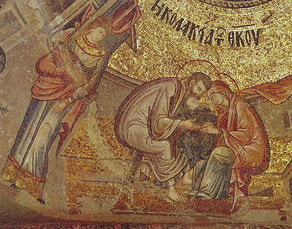 Istanbul is a city of juxtaposition. In one day you can… …wake up at least 10-15 minutes before sunrise to the first azan of the new day – the traditional call to prayer for the first of five daily Islamic prayers – while, at the same time, read in the newspaper that girls are prohibited by an intentionally secular government from wearing Islamic head coverings to public school. …discover financial poverty in the Grand Bazaar, haggling to your heart’s content in one of the world’s largest covered markets, or discover spiritual poverty, praying to heart’s content in two of the oldest, most famous religious sites in the world, the Hagia Sophia and the Blue Mosque. …literally walk from Europe to Asia, if you want to brave 1000 meters of traffic on the Fatih Sultan Mehmet Bridge. (Don’t do this. You’ll likely end up flattened or treading water in the Bosphorus.) You can also see extreme wealth adjacent to extreme poverty, modern architecture standing aside 1500 year old walls, Christianity and Islam living as peaceful neighbors and the West and the East more or less holding hands This list can go on, but of all the possible pairings, there is one – overlooked, but intentional – that we should especially remember as apostles of Christ. In a small ruin just outside the ancient city walls is a church-mosque-museum worth a visit. The Chora Church dates to as early as the late 300s and its mosaics to around the 14th Century. These are beautiful mosaics, more akin to those in Ravenna then Istanbul. So beautiful, in fact, that while straining their necks to take in the artistic beauty, Western visitors often miss the story completely. I can say this from experience. When I walked out of this church-mosque-museum, I remember marveling at the images of the infancy and miracles of Jesus, but feeling a bit alarmed, even agitated, by their juxtaposition with the infancy and miracles of Mary. Was the artist saying Mary’s life was parallel (read: equal) to Jesus’ life? Was he putting Mary on the same theological plain as God incarnate? Confusion, trepidation, perturbation – these are the seeds of learning. Let me tell you what I learned. It’s not completely our fault to jump to that conclusion. We don’t teach the stories of Joachim, Anne and Mary anymore. We don’t read the Syrian Protoevangelium Gospel of James or its Latin sister, Pseudo Matthew, where the stories are recorded. Why should we? They aren’t in the Bible. Reading non-canonical texts is kind of taboo in our often orthodox-or-else culture, right? And, yet, the Roman Catholic Church celebrates the lives of Joachim and Anne every July 26. To honor them tomorrow, let us place ourselves in the Chora Church and revisit their mythology, learning from its architecture stories of our faith. The entrance of the Chora Church has an exonarthex (outer entry) and an esonarthex (inner entry). Both are small, arched hallways. This is not a large church. The sixteen exonarthex mosaics, packed on the walls, domes and pendentives, tell you the expected stories – Jesus’ birth and early ministry. The spiritual tremors come when you enter the inner narthex, a chamber running parallel to the first. Sixteen more mosaics are found here, but this time they’re of the birth and early life Mary. The “Annunciation of St. Anne”, “Presentation of the Virgin in the Temple”, “The Virgin Receiving the Skein of Purple Wool – the Bible contains no such stories. We have no reason to believe they’re historical, written some 150 years after Jesus’s birth. Yet these stories were a living dynamic of Christianity for at least 1200 years. They grew the Christian imagination. They inspired faith. They announced the coming of Jesus. We should not dismiss them so easily. Tomorrow, on the Feast of Saints Joachim and Anne, consider taking some time to view the mosaics of this ancient church-mosque-museum, read the legends of Mary’s early life, and ponder the great wonder of God’s interaction in our lives. Mark Bartholet is the Pastoral Associate for Faith Formation at St. Peter Catholic Church in Charlotte, NC.
“The most important concern which the whole world can have is the saving of a single soul.”
-St. Vincent Pallotti St. Vincent believed that as disciples of Christ we are obliged to help one another get to heaven. We are most Christ-like when we participate in the holy mission of reuniting all of God’s children with their heavenly Father. Through any and all means possible, we support each other in faith so that brick by brick and life by life we are helping God build His holy kingdom. What an amazing privilege that is to help each other attain eternal salvation. How do we achieve this divine mission? We walk as closely as we can in the footsteps of Jesus, so that others may see His face in ours. We try and forgive each other as He did, with tender mercy, and we care for each other with love and compassion, as Christ taught us to do. We have the opportunity to be the light of Christ to all we encounter, even to those who don’t yet believe or may have lost their way. Maybe, just maybe, something we say or do ignites the faith in another. What an honor to play a part in the saving of even a single soul. A cross-post from the Pallottine Renewal Center Blog. The story of the Blind Bartimaeus is one of the most telling encounters between Jesus, our Savior, and our broken humanity so critically in need of salvation. The truth is we are all Bartimaeus’; we all deeply desire to receive the sight or “insight” only the Lord can provide.. But what is it that we long so much to see? And, what keeps or blinds us from seeing it?
I believe, as experienced in my own life, we all long to see that which all other sight is meant for, the Way. That is to say, we all long to see the way to our healing, our happiness, our security, but most of all we all truly long to see He who is the Way to our salvation. So what keeps us from seeing Him who is the Way, the Truth and the Life (Jn 14:6)? My own sight has often been blinded by the fears and anxieties brought on by the brokenness of my own human condition and triggered by the brokenness of a fallen world, itself so desperately in need of seeing the way of salvation. This anxiety that so many of us struggle with can lead to a type of spiritual blindness with, perhaps, more drastic consequences than any Bartimaeus’ physical blindness had caused. This spiritual blindness is the type that can challenge or even cripple the strongest of faiths. Yet, like many of the paradoxes found in scripture, this blindness can, through the Grace of God, serve to open our senses to what we must hear: the footsteps of the One who approaches. And if, like Bartimaeus, we come to courageously trust our Lord and learn to turn away from the surrounding fear that disables our discernment, what we really come to hear is His voice calling us; giving us our vocation to come and follow him: “On hearing that it was Jesus of Nazareth, he began to cry out and say, "Jesus, son of David, have pity on me." And many rebuked him, telling him to be silent. But he kept calling out all the more, "Son of David, have pity on me." Jesus stopped and said, "Call him." So they called the blind man, saying to him, "Take courage; get up, he is calling you."(Mark 10:47-49) When I hear the story of the blind Bartimaeus I can’t help but reflect on my own encounter with the living Savior, especially as He passes through my mind and heart amid the pangs of a hostile and blinding crowd of anxious emotions. Another particularly telling part of the story is how Bartimaeus, the “son of honor” repeatedly calls out to our Lord the, “Son of David”. King David was a man, much like Bartimaeus, who was destined for honor and dignity. Yet, he was blinded by his own brokenness and crippled by the powerlessness he felt against his own humanity. King David, like Bartimaeus, in Psalm 51 cried out to God with an unwavering confidence in God’s Divine Mercy. My own battle with anxiety has led me to cherish a deep sense of humility. I am not in control, I don’t have all the answers, I often cannot endure on my own, I need others, I need communion, I need Christ. Moreover, we hear the words of the prophet “be not afraid, I am with you” (Isaiah 41:10). And again, we continue to hear the words of St. Paul and all the martyrs who boasted of their weaknesses which won for them the strength of Christ (c.f. Cor. 12:9-10). So let us cry out! With all humility and confidence and faith in the words of another one of Christ’s redeemed…Domine, si vis, potes me mundare! “Lord, if you wish, you can make me clean.” (Mt. 8:2) Bart Zavaletta is a Theology teacher at Skutt Catholic High School in Omaha, NE. 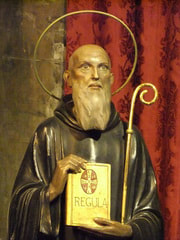 The first time I stayed in a Benedictine monastery, I was struck by the silence, especially since the monastery was only a few hundred feet away from my dorm (which was never silent). During meals in the refectory, walks in the hallways or the monastic cloister, down time in my assigned cell, both at daytime and during the night, there was a serious, purposeful silence. In his Rule, Saint Benedict constantly encourages his monks not to speak too much, and especially to abstain from vulgar and scurrilous speech. But what is the point of this silence? Why does Saint Benedict praise it so highly? “Listen carefully.” This is the first and most basic instruction laid down by Saint Benedict in his Rule, written for monks in the early sixth century. He was telling his monks to perk up and pay attention, because important guidelines for monastic life were coming their way in the ensuing 73 chapters. His advice, in those two words, seems to sum up much of Benedictine spirituality. Saint Benedict’s world was not too different from the world we live in today. His life began in the year 480, only four years after the fall of the Roman Empire. He was a witness of political upheaval, international war, and class warfare. This is not much different from our times. His answer to all these problems, however, was not to escape from the world in a monastery, but to find a place in which he could seek God in a stable environment. Why, then, is St. Benedict’s first piece of advice to listen? Saint Benedict was a keen observer of the human person, and he recognized what was separating people: noise, both internal and external. Even today, how comfortable are we with silence? Think about it. We need music in order to drive down the street; we need music to go for a run; some even need ‘white noise’ in order to fall asleep. How often do we see people, old and young, with their nose buried in a phone or searching for the next song instead of enjoying and appreciating God’s gift of creation around them? Or internally, are we truly listening to the other person in the conversation, instead of just thinking about what we will say next? Silence is the first step. Once we stop talking, turn off our music or put down our phones, then we have to quiet ourselves on the inside. We need to begin, in silence, to find Christ in the other. In each one of us there is an innate yearning, which can only be discerned and realized when we slow down from our own business and busyness and understand that we all want something more. God speaks in the silence of our hearts. Therefore, you have to “attend with the ear of your heart” to what God is calling you to. The Prologue of the Rule of Saint Benedict has, in my opinion, some of the most beautiful language ever written. I would suggest to anyone who has never read it to get it immediately. Saint Benedict wrote an amazing line – a rhetorical question – “What, dear brothers, is more delightful than this voice of the Lord calling to us?” But how can we ever hope to hear this delightful voice of the Lord unless we stop and listen? Saints Benedict and Scholastica, pray for us! Michael Phelan is in his final year in the Echo Program at the University of Notre Dame and serves as an Apprentice Catechetical Leader at Nativity Catholic Church in Brandon, FL, in the Diocese of St. Petersburg. He is a graduate of Saint Anselm College, a Benedictine college, in Manchester, NH.
I would never have considered myself spiritually poor before I came to CVV. In lots of ways, I wasn’t—I had grown up in a strong Christian family and had developed a meaningful faith life. I felt like my relationship with God, while not perfect by any means, was a personal one; I lived my life pretty strictly according to my morals and values. Coming to Denver, I never anticipated the immense growth in my spirituality that would occur, and how it would change me; how it would push me to look for God outside the times I set apart for Him, but to recognize Him in the day to day experiences of my life. Learning theological reflection has helped open my eyes to a deeper understanding of God.
I read the The Little Prince by Antoine de Saint Exupéry on our spring retreat to St. Benedict’s Monastery a few weeks ago, and while I was reading it for entertainment, it struck me a very real way. “The desert is beautiful,” the little prince said. The book continues, “And that was true. I had always loved the desert. One sits down on a desert sand dune, sees nothing, hears nothing. Yet through the silence, something throbs and gleams…” This year has opened me up to that throbbing and gleaming in others, in situations that seem hopeless, and in times when it’s hard to see past my own prejudices. CVV has opened my eyes to seeing God in those times when I have failed in the past to recognize Him. I see Him now on the mundane days sitting at the register at Safari Thrift, because He is the thankfulness in those who are homeless who are accepted here; He is the joy in the lonely people that come not to shop but to talk to someone who will listen; He is in the relationships that are formed between myself and the refugees, even though we can’t speak the same language; He is the invisible force in the day that makes it beautiful, even when it seems ordinary. This year has taught me to see God in these things, and to more fully understand the wisdom of the little prince, “It is only with the heart that one can see rightly; what is essential is invisible to the eye.” Christy Titus, Colorado Vincentian Volunteer Corps. This post was originally written and posted on the Catholic Volunteer Network Blog. For more Catholic Volunteer Blog Posts please visit the CVN Blog Page. The Catholic Apostolate Center is proud to partner with the Catholic Volunteer Network by developing faith formation resources for volunteers and alumni, assisting in its efforts to provide and advocate for faith-based volunteerism and collaborate in many additional ways. As we celebrate Independence Day, a day of thanksgiving and gratitude for this great country we live in, let us be reminded of our first American Saint, Elizabeth Ann Seton and the work she did to bring liberty and justice to all! The following is the Homily of the Pope Paul VI on the Canonization of Elizabeth Ann Seton, with emphasis added. 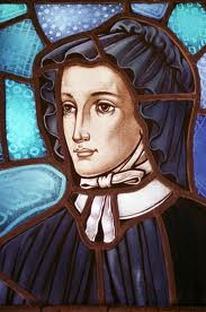 Yes, Venerable Brothers and beloved sons and daughters! Elizabeth Ann Seton is a Saint! We rejoice and we are deeply moved that our apostolic ministry authorizes us to make this solemn declaration before all of you here present, before the holy Catholic Church, before our other Christian brethren in the world, before the entire American people, and before all humanity. Elizabeth Ann Bayley Seton is a Saint! She is the first daughter of the United States of America to be glorified with this incomparable attribute! But what do we mean when we say: "She is a Saint"? We all have some idea of the meaning of this highest title; but it is still difficult for us to make an exact analysis of it. Being a Saint means being perfect, with a perfection that attains the highest level that a human being can reach. A Saint is a human creature fully conformed to the will of God. A Saint is a person in whom all sin-the principle of death-is cancelled out and replaced by the living splendor of divine grace. The analysis of the concept of sanctity brings us to recognize in a soul the mingling of two elements that are entirely different but which come together to produce a single effect: sanctity. One of these elements is the human and moral element, raised to the degree of heroism: heroic virtues are always required by the Church for the recognition of a person's sanctity. The second element is the mystical element, which express the measure and form of divine action in the person chosen by God to realize in herself-always in an original way-the image of Christ (Cfr.Rom. 8, 29). The science of sanctity is therefore the most interesting, the most varied, the most surprising and the most fascinating of all the studies of that ever mysterious being which is man. The Church has made this study of the life, that is, the interior and exterior history, of Elizabeth Ann Seton. And the Church has exulted with admiration and joy, and has today heard her own charism of truth poured out in the exclamation that we send up to God and announce to the world: She is a Saint! We shall not now give a panegyric, that is, the narrative which glorifies the new Saint. You already know her life and you will certainly study it further. This will be one of the most valuable fruits of the Canonization of the new Saint: to know her, in order to admire in her an outstanding human figure; in order to praise God who is wonderful in his saints; to imitate her example which this ceremony places in a light that will give perennial edification; to invoke her protection, now that we have the certitude of her participation in the exchange of heavenly life in the Mystical Body of Christ, which we call the Communion of Saints and in which we also share, although still belonging to life on earth. We shall not therefore speak of the life of our Saint Elizabeth Ann Seton. This is neither the time nor the place for a fitting commemoration of her. But at least let us mention the chapters in which such a commemoration should be woven. Saint Elizabeth Ann Seton is an American. All of us say this with spiritual joy, and with the intention of honoring the land and the nation from which she marvelously sprang forth as the first flower in the calendar of the saints. This is the title which, in his original foreword to the excellent work of Father Dirvin, the late Cardinal Spellman, Archbishop of New York, attributed to her as primary and characteristic: "Elizabeth Ann Seton was wholly American!" Rejoice, we say to the great nation of the United States of America. Rejoice for your glorious daughter. Be proud of her. And know how to preserve her fruitful heritage. This most beautiful figure of a holy woman presents to the world and to history the affirmation of new and authentic riches that are yours: that religious spirituality which your temporal prosperity seemed to obscure and almost make impossible. Your land too, America, is indeed worthy of receiving into its fertile ground the seed of evangelical holiness. And here is a splendid proof-among many others-of this fact. May you always be able to cultivate the genuine fruitfulness of evangelical holiness, and ever experience how-far from stunting the flourishing development of your economic, cultural and civic vitality -it will be in its own way the unfailing safeguard of that vitality. Saint Elizabeth Ann Seton was born, brought up and educated in New York in the Episcopalian Communion. To this Church goes the merit of having awakened and fostered the religious sense and Christian sentiment which in the young Elizabeth were naturally predisposed to the most spontaneous and lively manifestations. We willingly recognize this merit, and, knowing well how much it cost Elizabeth to pass over to the Catholic Church, we admire her courage for adhering to the religious truth and divine reality which were manifested to her therein. And we are likewise pleased to see that from this same adherence to the Catholic Church she experienced great peace and security, and found it natural to preserve all the good things which her membership in the fervent Episcopalian community had taught her, in so many beautiful expressions, especially of religious piety, and that she was always faithful in her esteem and affection for those from whom her Catholic profession had sadly separated her. For us it is a motive of hope and a presage of ever better ecumenical relations to note the presence at this ceremony of distinguished Episcopalian dignitaries, to whom-interpreting as it were the heartfelt sentiments of the new Saint-we extend our greeting of devotion and good wishes. And then we must note that Elizabeth Seton was the mother of a family and at the same time the foundress of the first Religious Congregation of women in the United States. Although this social and ecclesial condition of hers is not unique or new (we may recall, for example, Saint Birgitta, Saint Frances of Rome, Saint Jane Frances Fremiot de Chantal, Saint Louise de Marillac), in a particular way it distinguishes Saint Elizabeth Ann Bayley Seton for her complete femininity, so that as we proclaim the supreme exaltation of a woman by the Catholic Church, we are pleased to note that this event coincides with an initiative of the United Nations: International Women's Year. This program aims at promoting an awareness of the obligation incumbent on all to recognize the true role of women in the world and to contribute to their authentic advancement in society. And we rejoice at the bond that is established between this program and today's Canonization, as the Church renders the greatest honor possible to Elizabeth Ann Bayley Seton and extols her personal and extraordinary contribution as a woman -a wife, a mother, a widow, and a religious. May the dynamism and authenticity of her life be an example in our day-and for generations to come-of what women can and must accomplish, in the fulfillment of their role, for the good of humanity. And finally we must recall that the most notable characteristic of our Saint is the fact that she was, as we said, the foundress of the first Religious Congregation of women in the United States. It was an offspring of the religious family of Saint Vincent de Paul, which later divided into various autonomous branches-five principal ones-now spread throughout the world. And yet all of them recognize their origin in the first group, that of the Sisters of Charity of Saint Joseph's, personally established by Saint Elizabeth Seton at Emmitsburg in the Archdiocese of Baltimore. The apostolate of helping the poor and the running of parochial schools in America had this humble, poor, courageous and glorious beginning. This account, which constitutes the central nucleus of the earthly history and worldwide fame of the work of Mother Seton, would merit a more extended treatment. But we know that her spiritual daughters will take care to portray the work itself as it deserves. When I think of role models for Catholic men, I think of St. Joseph, St. Christopher, St. Thomas More, St. Vincent Pallotti, and men in my life like my father, grandfather and even certain professors. When I think of who teaches me best about how to be a Catholic man, I think of Mary. Now, before you laugh, let me point out that Mary can be a source of both masculine and feminine spirituality. Typically, Mary is viewed primarily as a role model for women. So what can Mary teach Catholic men about our faith and how to live our lives today?
First, Mary is introduced to us in the Gospels when an angel appears to this timid young Jewish girl, and addresses her, “Hail, favored one! The Lord is with you” (Luke 1:28). Immediately, we can tell that the life of Mary is deeply intertwined with the love and charity of God. How is it that a young woman managed to achieve such favor with God? Or maybe to phrase it in another way, what is it about Mary that made God choose her? The Old Testament is filled with stories of women answering God’s call. Sarah, Hannah, Deborah, Ruth, Judith and Esther are just a few of the many that could be named here. They all paved the way for Mary’s role in the Incarnation. “Mary stands out among the poor and humble of the Lord, who confidently hope for and receive salvation from Him” (CCC #489). Throughout salvation history in the Bible, God constantly chooses the weak to lead the strong, men and women alike. This choice of God goes against what society often tries to tell us as men. Society tells us that men should be brutish with no need for a Savior because we can “do it on our own.” Mary stands out among all believers because of her eagerness to do God’s bidding. It is her desire for God, not independence, which brings her closer to God. Mary exemplifies complete obedience in God and submits herself to his will. In saying “yes,” Mary showed us a unique holiness. While God chose Mary from her conception, she was still given the opportunity to consent to God. Many Catholics today have the fear of speaking about faith in public. What if faith wanted to manifest itself in you? That may be shocking to think about, but the obedience of faith that Mary professed is what revealed her grace to us. As men, we look to Mary for strength and as a witness to doing the Lord’s will under immense pressure. Jesus Christ, fully God and fully human, came from this humble woman. Mary’s love, grace, and faithfulness brought Christ into this world. Mary’s choice brings us closer to Christ’s humanity. While Christ is the Son of God, he is also the Son of Mary. This helps us to come to know God and build our relationship with him. By better understanding Mary, we can better understand Christ. Mary is key to God’s plan. The willing “yes” became the center of our faith. God did not need to wait for Mary’s acceptance, but her consent was vital for the birth of the Church to come out of love, charity, and grace. It is for that reason that “Mary is the symbol and most perfect realization of the Church” (CCC #507). Her “role in the Church is inseparable from her union with Christ” (CCC #964). For these reasons, Mary serves as the model for how the Church should practice faith and charity. She is the model servant of God for both women and men. As members of the Church today, we can look to her for the attributes of obedience, faith, hope and burning charity as a way to lead more masculine lives. Instead of feeding of off the stereotypes of what men should be, we can turn to Mary for direction on how to live our lives according to God’s plan. She is an “advocate and helper” for us all (CCC #969). The “Blessed Virgin’s salutary influence on men…flows forth from the superabundance of the merits of Christ” (CCC #970). Mary advocates for us and helps us to come to know Christ. Our prayers to Mary extend beyond praying to a humble woman, in praying to Mary, we acknowledge our faith in the Incarnation in Christ and the sacrifice Christ made because he loves us. By praying to Mary, we can come to understand how much both Mary and Jesus Christ love each of us. It is our duty to have faith in Christ through Mary. In doing so, we can become true men for God, and not simply men chasing our own ambitions. Mary accompanies us on this pilgrimage of our faith (CCC #972). She intercedes for us in our attempts to know Christ, and just because we are men does not mean that we cannot try to become more like Mary. Thomas Coast works in the Diocese of Manchester, New Hampshire and is working on his M.A. in Theology through the Echo Faith Formation Program at the University of Notre Dame. |
Details
Archives
July 2024
Categories
All
|
About |
Media |
© COPYRIGHT 2024 | ALL RIGHTS RESERVED

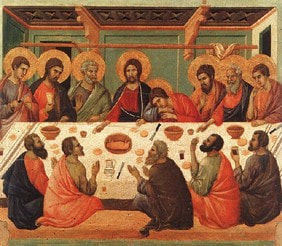

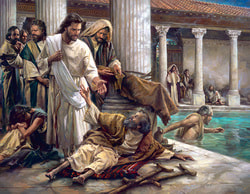
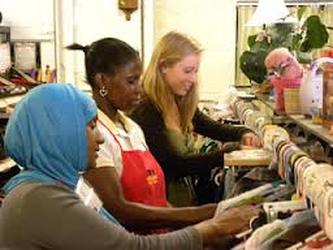
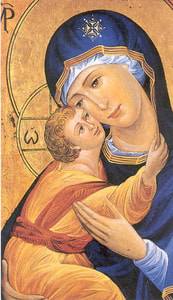
 RSS Feed
RSS Feed